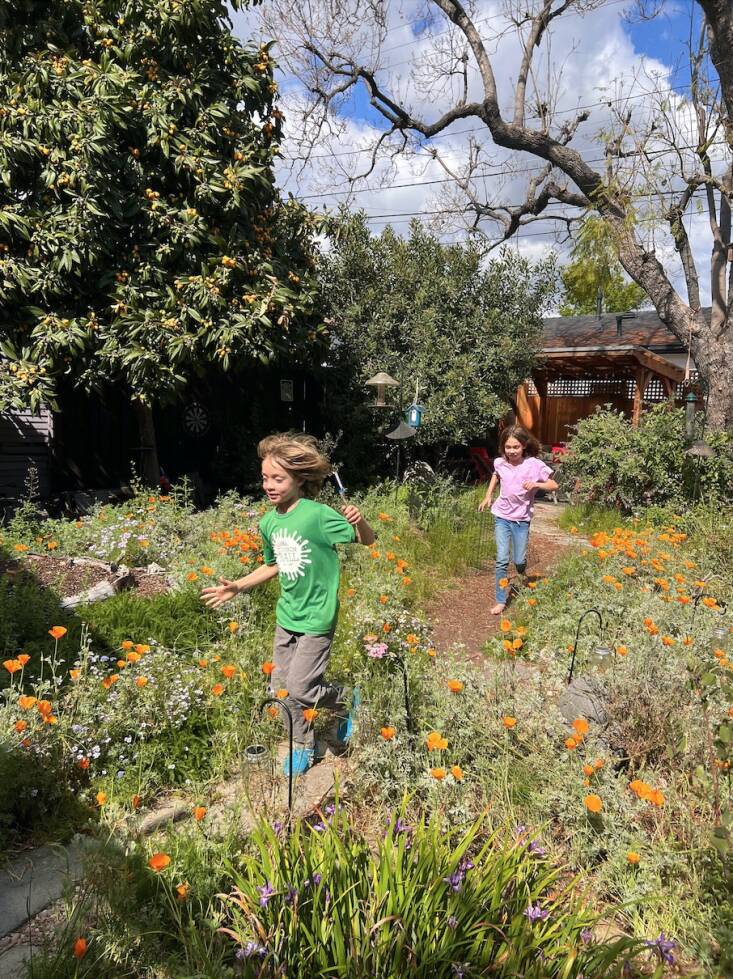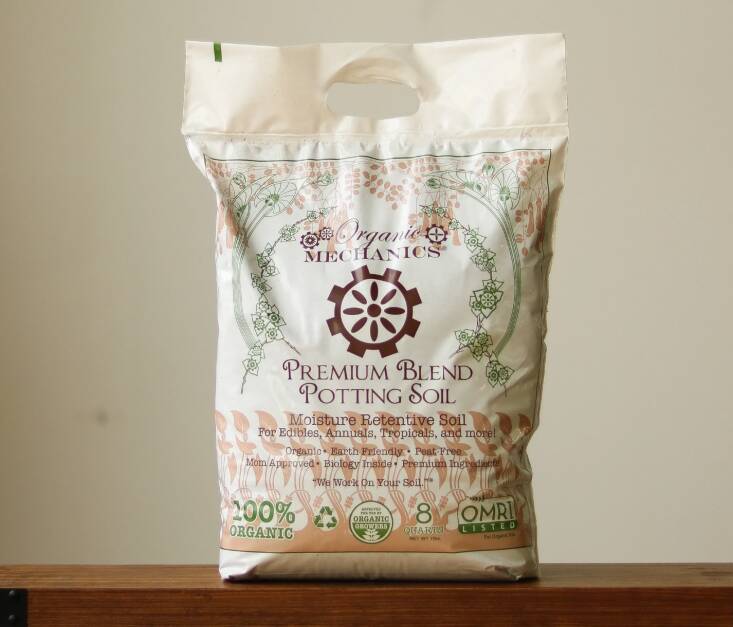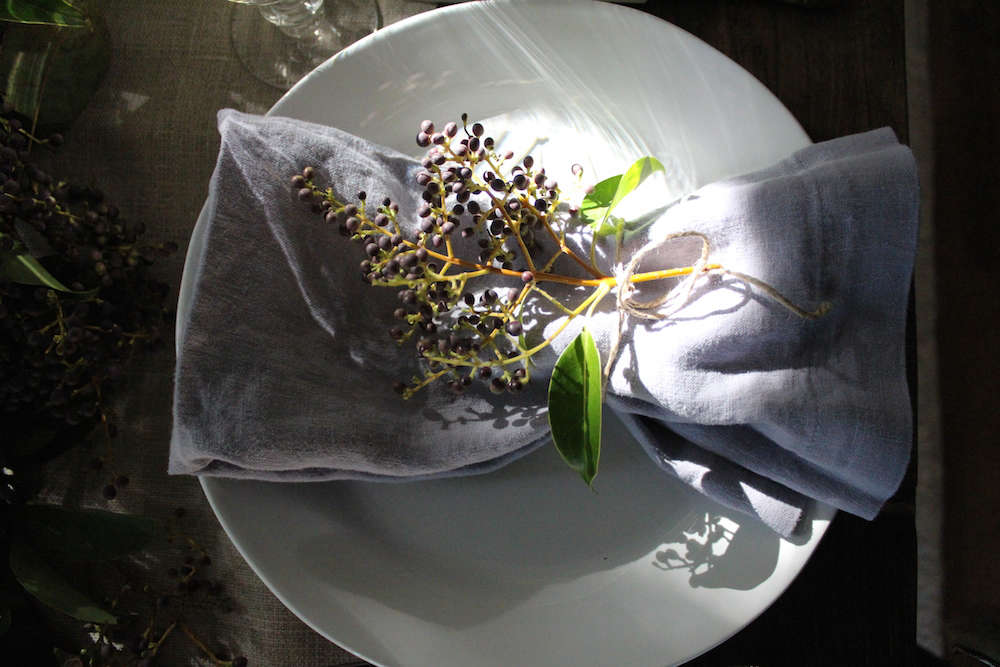We’re not going to lie: it’s harder these days to feel optimistic about the world—but being a gardener helps. As exuberant plant and garden lovers, we try to surround ourselves with all things nature-related, which no doubt helps nudge our minds, bodies, and psyches toward peace and gratitude. Today, as we gather with friends and family, we look back and reflect on all the productive (and pretty) trends, developments, and tools that have made our gardens (and us) much healthier and more productive.
Here are 8 things we are grateful for.
Battery-Powered Garden Tools

Many, many lungs and ears are thankful for not smelling and hearing as many gas-powered leaf blowers and mowers this past year. I admit that I love the scent of a freshly cut lawn but I readily admit I detest the smell of exhaust. Gas-powered outdoor equipment, including blowers and mowers, emit a nasty amount of carbon dioxide, nitrogen oxides, and volatile organic compounds (VOCs). Turns out that lawn tools with a two-stroke engine can vomit 20 to nearly 300 times the emissions of a car every hour they are running. And this is very ironic because lawn tools are hurting the same outdoor spaces we are hoping to keep up and nurture. Luckily, battery-powered models are an easy option, and with upgrades in battery capacity and efficiency it’s easier than ever to make the switch; plus, rechargeable versions ensure you no longer have to struggle with the cord as you mow. Let’s raise a toast to the battery-powered lawn tool revolution. And who knows? Maybe in the future we will be celebrating solar garden tools!
The Rewilding Movement

The term “rewilding” is, fortunately, no longer a foreign term. More gardeners are embracing the movement and understanding that it mitigates climate change, helps restore ecosystems previously disrupted by humans, and greatly benefits humankind. Many are realizing that not only do we need to protect the environment, we need to restore it as well.
Peat-free Products

We are so grateful that word is getting out that peat-free products are better for the environment and more sustainable. More gardeners are realizing that preserving vulnerable peatlands is critical for the unique biodiversity they support and for the wider environment. And now, with the development of more peat-free soil mixes in recent years, it’s easier to make the switch. This is the year to try out coconut coir, an organic amendment made from coconut husks.
Ecological Certifications for Home Gardeners

Clothing, rugs, furniture, cleaning products—nearly everything has certification these days that attests to its eco credentials. Why not the home garden? More gardeners want to celebrate their hard work and their eco-friendly yard by seeking a certification. One example of a home certificate is the Certified Wildlife Habitat. This certification recognizes gardens that provide water, food, cover, and nesting areas for local wildlife. Others include: Backyard Habitat Certification Program, Pollinator Garden Certification, and Monarch Waystation. This type of recognition isn’t just self-congratulatory; gardeners want to inspire more people to rethink their landscapes and remove their resource-guzzling lawn, avoid toxic chemicals, and plant for our pollinator pals.
Multitasking Plants

Many designers and home gardeners are beginning to seek out less, dare I say it, pedestrian plants (e.g., boxwood) in favor of multitasking plants that offer multiple benefits. I’m talking about plants that are edible, pollinator-friendly, low-water, easy-to-maintain, and great for cut flowers. My favorite hedge alternatives to boxwood that work extra hours in the garden: evergreen blueberries, grevilleas, westringias, and pineapple guava.
Mini Vases

We’re loving the trend toward smaller, more artful floral displays. Maybe you don’t have the budget, space, or means to have a huge arrangement? The bud vase is the perfect petite solution. Or maybe you love the minimalist, hyper-focused look of a small single flower. Either way, the mini vase, with its delicate design, embraces the less is more concept. Some of the best places to display a small floral arrangement or single flower: on a windowsill, on a bookshelf, in a bathroom, or on a nightstand.
Gleaning to Share

Gardeners blessed with excess citrus and zucchinis coming out their ears (how much zucchini bread can one person make?) are sharing their crops with others. Sure, a few dropped fruits will help out hungry squirrels, but but too much leftover produce is not only rodent-inviting but wasteful. Thankfully many gardeners, farms, and community gardens, are harvesting excess crops to give away to those who are food insecure. My family volunteers with ExtraFood and they have a program called “Share the Bounty” where volunteers will pick up people’s bounty and deliver it to those facing hunger—the organization can even help people harvest if they are unable to. Share the Bounty has donated over 27,000 pounds of produce to date.
The Edimentals Trend

Edimental gardening was a growing trend in 2024. It involves growing plants that are both edible and ornamental. The idea is to create a garden filled with herbs, flowers, fruits, and vegetables that not only enhance the visual appeal of a garden but provide food, are less work to maintain, and work with different sized garden spaces. We hope this tasty trend persists into the new year.
See also:
- Edimentals Are Trending. Here’s Why You Should Include Them In Your Garden
- Tiny Bouquets: 8 Ideas for Floral Arrangements in Miniature Vases
- Gardening 101: Grevilleas












Have a Question or Comment About This Post?
Join the conversation